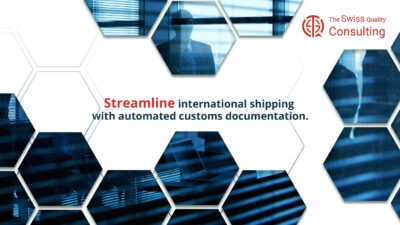Navigating the Complexities of Internal Business Transactions
Introduction
In the dynamic world of business, simplifying inter-company transactions is crucial for enhancing operational efficiency and ensuring seamless business processes. This article aims to provide business executives, mid-level managers, and entrepreneurs with strategic insights into simplifying transactions between different divisions or subsidiaries of the same company.
The Importance of Streamlining Inter-Company Transactions
Inter-company transactions, encompassing financial activities between subsidiaries or divisions within a parent company, often present a labyrinth of complexity and administrative hurdles. These transactions, ranging from revenue recognition to expenses allocation, can become convoluted due to the sheer volume and interdependencies involved. The traditional manual approach to managing inter-company transactions is often time-consuming, prone to errors, and lacks the visibility and control necessary for accurate financial reporting, compliance, and operational efficiency.
Manual processes often involve a multitude of spreadsheets, emails, and manual data entry, leading to inconsistencies, duplications, and a lack of transparency. This manual approach can hinder compliance with accounting standards, increase the risk of financial misstatements, and obscure the true financial position of the company. Moreover, the lack of centralized control and visibility can hinder decision-making, hampering operational efficiency and jeopardizing strategic planning.
Streamlining inter-company transactions is crucial to address these challenges and reap the benefits of improved financial reporting, compliance, and operational efficiency. By automating these processes, businesses can eliminate manual errors, enhance data accuracy, and gain real-time insights into inter-company relationships. This automation enables businesses to:
Ensure Accurate Financial Reporting: Automating inter-company transactions eliminates the risk of human error and ensures that financial data is consistent across subsidiaries and divisions.
Enhance Compliance with Accounting Standards: Automated processes adhere to accounting standards, minimizing the risk of non-compliance and potential penalties.
Optimize Operational Efficiency: Streamlined inter-company transactions reduce administrative burdens, freeing up personnel to focus on value-added activities.
Facilitate Data-Driven Decision-Making: Real-time visibility into inter-company transactions provides valuable insights for informed decision-making across the organization.
Support Strategic Planning: Accurate and consistent financial data from inter-company transactions contributes to robust strategic planning and informed resource allocation decisions.
In essence, streamlining inter-company transactions is not merely a technical exercise; it is a strategic imperative that empowers businesses to gain control over their financial operations, enhance compliance, and drive operational efficiency. By embracing automation and adopting standardized processes, businesses can transform inter-company transactions from a source of complexity and risk into a driver of agility, transparency, and value creation.
Reducing Operational Inefficiencies
Simplified inter-company transaction processes help reduce administrative burdens, minimize errors, and save time, thereby enhancing overall business performance.
Role in Change Management
Implementing changes to simplify inter-company transactions is a critical part of change management. It involves re-evaluating existing processes, embracing new methodologies, and often, the integration of new technologies.
Adopting a Systematic Approach
Successfully managing this transition requires a systematic approach, ensuring all stakeholders are aligned and the changes are implemented effectively.
Impact on Executive Coaching and Leadership
Leadership plays a pivotal role in the successful simplification of inter-company transactions. Executive coaching services are increasingly focusing on training leaders in overseeing complex financial transformations and streamlining internal processes.
Fostering Leadership for Financial Excellence
Through executive coaching, leaders gain the necessary skills to drive changes in financial operations, ensuring the successful simplification of inter-company transactions.
Effective Communication in Financial Reorganization
Effective communication is key to implementing changes in inter-company transaction processes. It involves clearly explaining the reasons, benefits, and methods of the new approach to all affected parties.
Building Consensus and Understanding
Effective communication ensures that everyone involved understands the changes, leading to smoother implementation and better compliance.
Generative AI in Streamlining Transactions
Generative Artificial Intelligence (AI) can play a significant role in streamlining inter-company transactions. AI technologies can automate and optimize transaction processes, reduce manual efforts, and provide accurate, real-time financial analytics.
Leveraging AI for Efficient Financial Processes
Generative AI offers innovative solutions, making inter-company transactions more efficient, transparent, and compliant with regulatory standards.
Conclusion Simplifying Inter-Company Transactions
In conclusion, simplifying inter-company transactions is a strategic imperative for businesses aiming to optimize their internal operations. By embracing technological solutions and effective change management strategies, companies can ensure financial accuracy, compliance, and operational efficiency.
#InterCompanyTransactions, #BusinessEfficiency, #FinancialManagement, #AIinFinance, #OperationalExcellence























